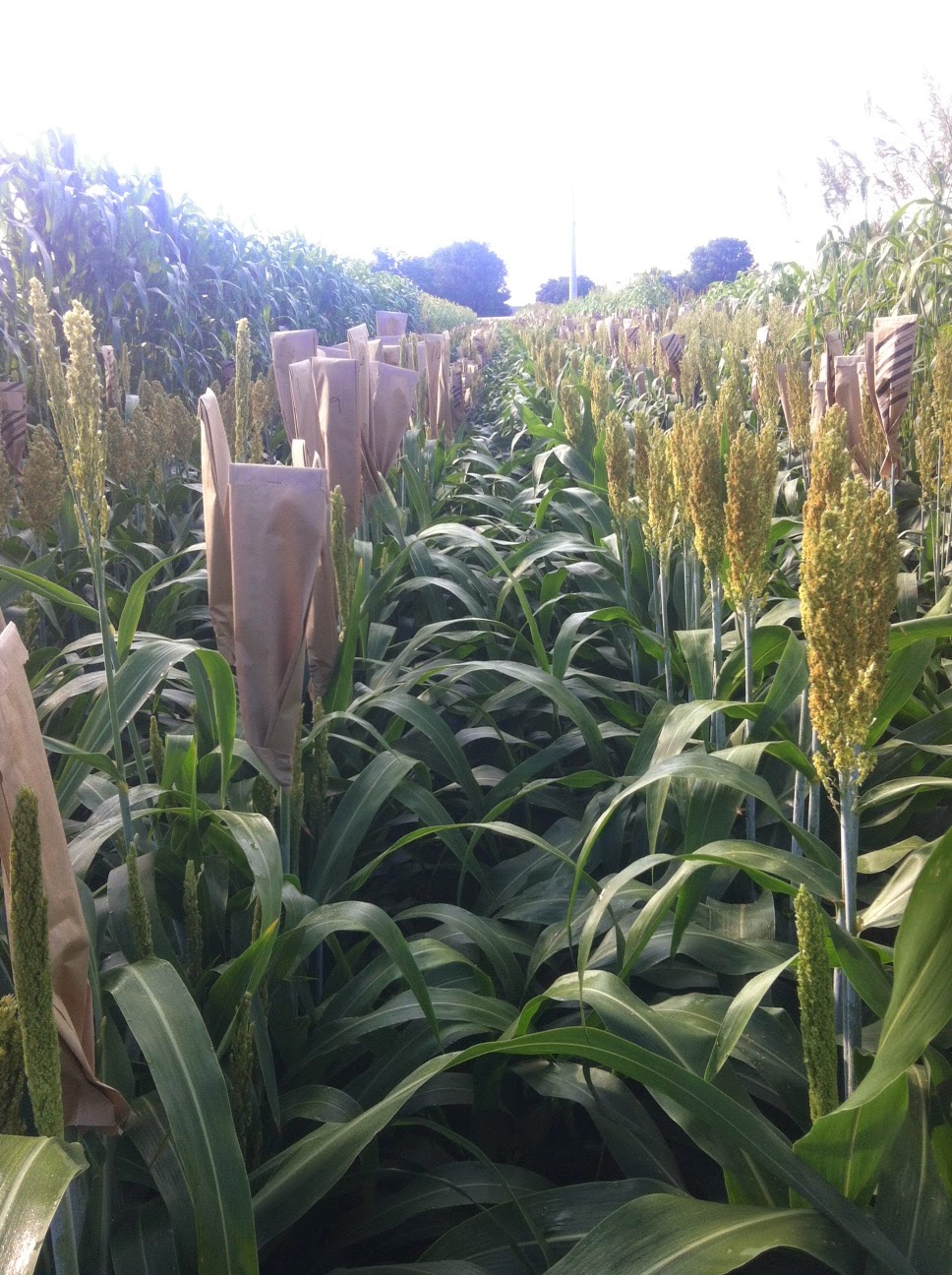Summer is without a doubt here! Temperatures are on the rise, even with the rains that we received last week. The fields are looking great after those showers, though, and irrigating still hasn’t been an issue, whoo hoo! Summer has also brought with it an increase in the bug populations. The sorghum is teeming with all sorts of insects –everything from ladybugs and gnats, to spiders, worms, and grasshoppers of every shape, size, and color. Luckily, the mosquito population has stayed low *knock on wood* and I’m praying it remains so. Now on to the meat of the post.
 |
| Paired rows |
For weeks now the focus of everyday has been on bagging and crossing
in two of our fields (check out my last post for details on bagging). The
females have been bagged at tip flowering in preparation of crossing.
Approximately 3-5 days after bagging, the females will have flowered down and
are ready to receive pollen from the males. In some of the tests (the ones I’ve
mainly been working in) the rows are done in male and female pairs. The process
of crossing is simple: find a male with pollen and shake the panicle into a
pollinating bag –we’ve used black striped bags to signify crossing. Then,
remove an appropriately dated bag from a corresponding female, place the
crossing bag over it, and shake it to distribute the pollen over the panicle.
 |
| Pollen (yellow powder) |
 |
| Pollen is available |
 |
| No pollen left |
You can tell if a male has pollen by flicking the head. If
it does, a yellowish cloud will be released. Also, just by looking at the
panicle, yellow anthers usually indicate that pollen is present and
orange/brown anthers mean that the pollen was already shed.
Each day, new females become available (the females that
were bagged 3-5 days previously). However, sometimes the males and females
aren’t ready at the time. In such an instance, they say that the nick is off.
In a perfect world, though, in the fields I’ve been working in, 25 females per
plot would get crossed and one female would be left as a sterility check.
The heaviest crossing has been done and things have wound
down considerably. It all has to be done by July 4, so we will be finished with
crossing very soon! Next post I’ll discuss my trip to Corpus Christi in which I
helped with the Sorghum Improvement Conference of North America. Till then,
thanks and gig ‘em!
 |
| The crossing block |
No comments:
Post a Comment